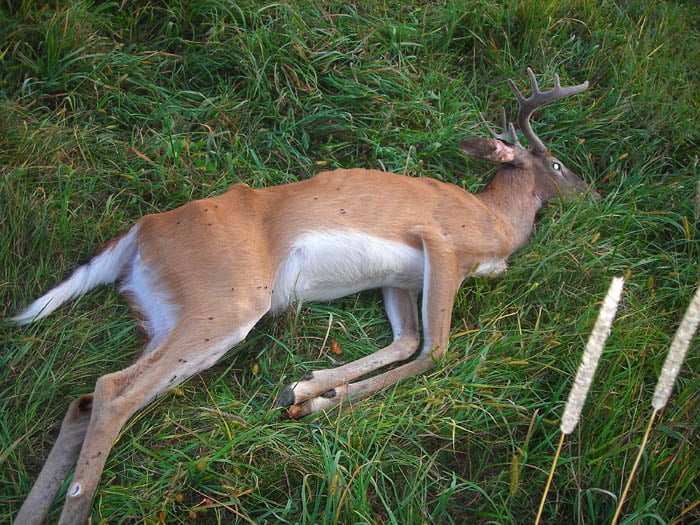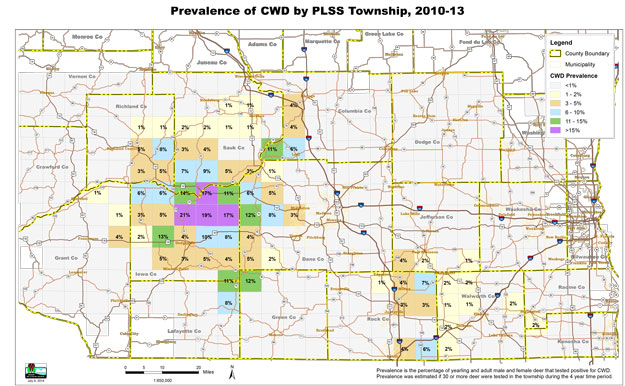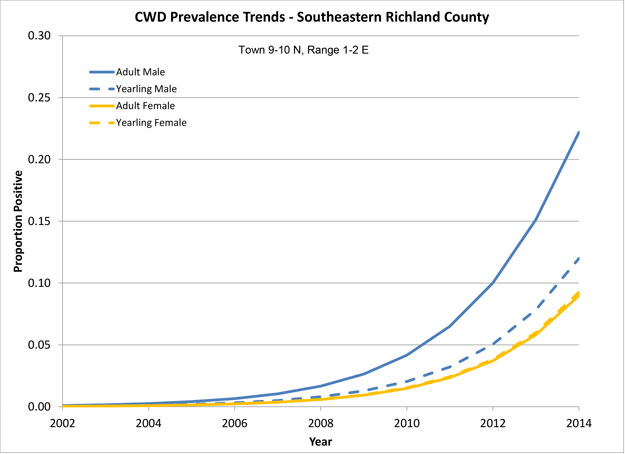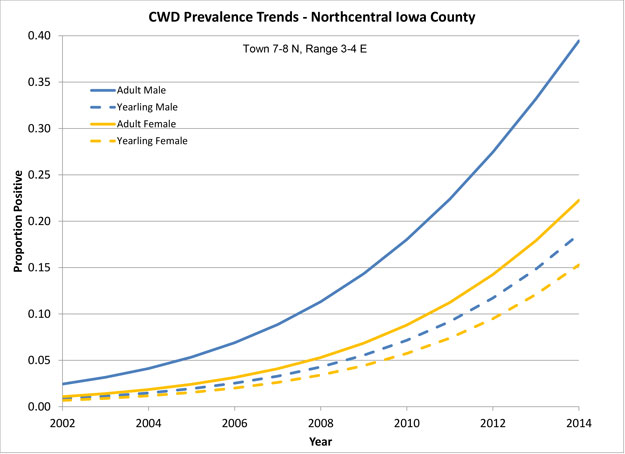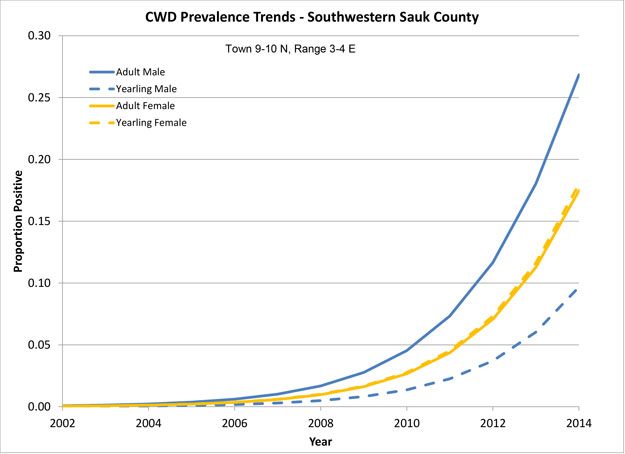Despite sampling the second-lowest number of deer in Wisconsin’s 14-year CWD-testing program in 2014, its Department of Natural documented a record 6.1 percent disease rate as 329 of 5,414 tested whitetails carried the fatal brain disease this past year.
That’s the third straight year the rate for chronic wasting disease exceeded 5 percent of tested deer, as well as the third straight year the number of sick deer exceeded 325.
This 2½-year-old buck was found dying of chronic wasting disease in Iowa County.
The only year in which the Wisconsin DNR collected fewer samples than in 2014 was 2011, when it collected 5,313. The four lowest years for CWD sampling have all occurred since the current administration took office in January 2011 and adopted a “passive approach” to the disease.
The DNR soft-peddled the 2014 disease rates when announcing the results in March. The headline on its news release simply read: “Disease sampling results provide current snapshot of CWD in Wisconsin.” And the lead paragraph simply stated that state wildlife officials tested more than 5,400 deer for CWD in 2014, and found 329 sick ones, primarily in the endemic area of southern Wisconsin.
For perspective on the meaning of 329 CWD cases in 2014, consider that the DNR collected nearly 14 times as many tests from 2001 through 2004 (75,295 samples) to find Wisconsin’s first 328 cases.
Granted, many of those early samples came from outside the known disease area when assessing the entire state. But even when sampling became more targeted, the disease rate took until 2007 and 2008 to approach 1.5 percent, but then hit 3 percent by 2010 and 4.5 percent by 2011.
CWD Is Always Fatal
Once deer contract it, their life expectancy is 18 months. They typically look healthy for about the first 16 months of the death sentence before showing its effects. Those signs include drooling, staggering, and stark ribs and spine outlined beneath a ratty hide. Some also lose their fear of humans, and even seek warmth by sitting against the sides of south-facing walls of homes and garages in winter.
In mentioning disease rates, the DNR news release noted a region covering northwestern Dane and northeastern Iowa counties has disease rates of 25 percent for adult bucks (2½ years and older), over 10 percent for adult females, and 8 percent and 7 percent, respectively for yearling males and females (1½ years old).
Unfortunately, those Dane/Iowa county prevalence rates aren’t current. CWD in that area hit those marks in 2012 and 2013. In 2014, it increased further to 27 percent and 12 percent.
The news is worse a few miles west of there in north-central Iowa County. The CWD rate there hit a record 40 percent and 22 percent, respectively, for adult bucks and does. Further, CWD rates for the area’s yearling bucks and does was 18 percent and 15 percent, respectively.
Although the Wisconsin DNR isn’t hiding this information, it leaves it up to citizens to find it on the agency’s website. To see how CWD is growing and spreading, for instance, go to http://dnr.wi.gov/topic/wildlifehabitat/prevalence.html.
This DNR chart shows CWD prevalence rates by township in southern Wisconsin.
Next, scroll to the bottom section titled “CWD prevalence trends,” study the map, and click on the yellow dots in southwestern Sauk County north of Spring Green, and southeastern Richland County south of Richland Center. Now click on the “prevalence graph” to see the charts that show how fast CWD is increasing in those areas, which had few sick deer only seven years ago.
These graphs show that disease rates in these areas are climbing far faster than where it first surfaced in 2001 and 2002. The disease rate for adult bucks is already about 27 percent north of Spring Green, and about 23 percent south of Richland Center.
The DNR used about half of its news release to share the scant good news about CWD. For the third straight year it found no additional CWD cases in northwestern Wisconsin around Washburn County, where one sick doe tested positive in 2012. Also, it found only two additional cases in Adams County after first finding CWD in central Wisconsin in 2012.
In light of these facts that CWD rates continue to worsen how do you feel the Wisconsin DNR is handling the situation? Is their passive approach the correct one? Or should officials be looking into alternative means of controlling the disease such as increased deer harvest or even sharp shooting? Let us know your thoughts in the comments section below.

 By
By 